Monthly Archives: August 2017
 I’ve never really thought of my Aunt Dixie Richards as being exactly shy, but maybe that’s because I’ve known her all my life. She never seemed shy to me, or to any of the other kids in the family. Nevertheless, when I watched her in an old home movie my parents shot when they got one of those “new fangled” movie cameras, she seemed very shy. Of course, none of the family really wanted to have a home movie taken of them…probably because it was such a new thing, but in watching Aunt Dixie, I saw a bit of shyness on her face. I think that maybe I’m like Aunt Dixie in some ways, because I’m a bit of a shy girl too…until I get to know people.
I’ve never really thought of my Aunt Dixie Richards as being exactly shy, but maybe that’s because I’ve known her all my life. She never seemed shy to me, or to any of the other kids in the family. Nevertheless, when I watched her in an old home movie my parents shot when they got one of those “new fangled” movie cameras, she seemed very shy. Of course, none of the family really wanted to have a home movie taken of them…probably because it was such a new thing, but in watching Aunt Dixie, I saw a bit of shyness on her face. I think that maybe I’m like Aunt Dixie in some ways, because I’m a bit of a shy girl too…until I get to know people.
As one of the younger children in a family of nine children, Aunt Dixie saw her older siblings get married and head off to start families. I’m sure that also gave her the opportunity to babysit her nieces and nephews. In many ways, I think that babysitting the little ones probably prepared her for having children of her own, as well as, babysitting a number of children of nieces and nephews later on. I didn’t know that she babysat so many children. I found that out last year, and I just think that is really awesome. For parents, having a babysitter that you can trust is vital.

Aunt Dixie also has grandchildren now too. She has four grandsons, and one granddaughter. She wasn’t sure she was going to ever get a granddaughter, but the last one was finally a girl. The boys, being a little older, are often off doing their own things, so this summer, Aunt Dixie has spent a lot of time with her granddaughter, Mayme Williams. They have had a lot of fun, and now that school is ready to begin, Aunt Dixie told me that she is feeling pretty sad that her time with Mayme is ending, but at six years old, she has to go to first grade. At least Aunt Dixie will have time with the kids after school, and that always makes her feel better. Today is Aunt Dixie’s 74th birthday. Happy birthday Aunt Dixie!! Have a great day!! We love you!!
 As a boy, my grand nephew, Keifer Balcerzak was totally his daddy’s boy. He and my nephew, Dave Balcerzak were and still are very much alike. They like the same things…mostly sports, but they also have the same temperament, sense of humor, and to a large degree, personality. They have always loved to hang out and do things together, especially watching sports. Theirs was a wonderful daddy/son relationship. Of course, nothing stays the same, and all kids grow up and start to lead their own lives, but that doesn’t mean that the daddy/son relationship must end, and for Keifer and his dad, it certainly has not ended. Now that Dave has a “man cave,” Keifer and Dave watch the games there.
As a boy, my grand nephew, Keifer Balcerzak was totally his daddy’s boy. He and my nephew, Dave Balcerzak were and still are very much alike. They like the same things…mostly sports, but they also have the same temperament, sense of humor, and to a large degree, personality. They have always loved to hang out and do things together, especially watching sports. Theirs was a wonderful daddy/son relationship. Of course, nothing stays the same, and all kids grow up and start to lead their own lives, but that doesn’t mean that the daddy/son relationship must end, and for Keifer and his dad, it certainly has not ended. Now that Dave has a “man cave,” Keifer and Dave watch the games there.
Keifer is married now, and is going to become a daddy in February, so I don’t know how that will change things, as far as the sporting events he watches with his dad, but I suppose that if Keifer and Katie were to have a boy, he could just start him out right by making it a daddy/son/grandpa relationship. It makes sense. If Keifer took the baby with him, Katie could have a nice quiet afternoon to relax, because as we all know, babies are a lot of work, and it often falls to the mom, who often stays home with the baby. Just  giving you a suggestion there, Keifer. I think that Keifer will be a dad like his own dad is, and that means that this little baby is going to be very blessed. Keifer has a kind and loving heart, and he has grown up with a great example of just what a dad should be like, so he will translate that into being the best dad he can be.
giving you a suggestion there, Keifer. I think that Keifer will be a dad like his own dad is, and that means that this little baby is going to be very blessed. Keifer has a kind and loving heart, and he has grown up with a great example of just what a dad should be like, so he will translate that into being the best dad he can be.
Keifer is a lot like his dad in his work ethic and abilities. Both of them are computer techicians, and both work for the State of Wyoming. They are great at what they do, and they stay very busy, because as we all know, in this age of computers, technicians are a vital part of keeping information safe and yet accessible. Not everyone has the ability to repair computers, or even fix the many issues they can have…all while making sure that they stay safely protected from the many hackers out there these days. Keifer is going to have a long and prosperous career in computer technology. Today is Keifer’s birthday. Happy birthday Keifer!! Have a great day!! We love you!!
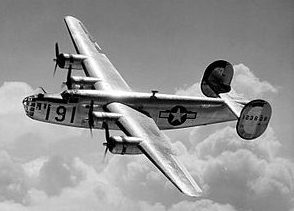
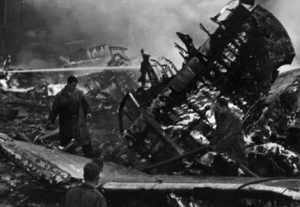 Airplane disasters are always horrible, but sometimes the circumstances just don’t seem to fit the disaster. During World War II, the US Army Air Forces were stationed in bases around the world, mostly for quick access to air targets, but with the added benefit for the people in the area of some protection from enemy forces. Just having the planes in the area tended to be a deterrent for the enemy planes, who did not want to be attacked in great numbers. Planes like the B-17, B-24, and others regularly flew over the towns near their bases. One such flight…unfortunately ended in a disaster.
Airplane disasters are always horrible, but sometimes the circumstances just don’t seem to fit the disaster. During World War II, the US Army Air Forces were stationed in bases around the world, mostly for quick access to air targets, but with the added benefit for the people in the area of some protection from enemy forces. Just having the planes in the area tended to be a deterrent for the enemy planes, who did not want to be attacked in great numbers. Planes like the B-17, B-24, and others regularly flew over the towns near their bases. One such flight…unfortunately ended in a disaster.
On August 23, 1944, a pair of newly refurbished B-24 Liberator heavy bombers were being taken on a test flight, prior to their delivery to the 2nd Combat Division. The planes departed US Army Air Force Base Air Depot 2 and Warton Aerodrome at 10:30am. Due to an impending potentially violent storm, both planes were recalled. Unfortunately, by the time they returned, to the vicinity of the Aerodrome, the wind and rain had significantly reduced visibility. Newspaper reports detailed wind velocities approaching 60 mph, water spouts in the Ribble Estuary and flash flooding in Southport and Blackpool. As the two planes flew in formation from the west toward runway 08, the pilot of the B-24H-20-CF Liberator, US aircraft serial number 42-50291, named “Classy Chassis II”, 1st Lieutenant John Bloemendal, reported to the control tower that he was aborting landing at the last moment and would “go around.”
Shortly afterwards, and out of visibility of the second aircraft, the aircraft hit the village of Freckleton, just east of the airfield. As it came down, the B-24 Liberator heavy bomber crashed into the center of the village of Freckleton, Lancashire, England. The aircraft crashed into the Holy Trinity Church of England School, demolishing three houses and the Sad Sack Snack Bar. The death toll was 61, including 38 children.
The plane was already flying very low, and for whatever reason, the wings were very nearly vertical. The plane’s right wing tip hit a tree top, and was ripped away as it impacted the corner of a building. The rest of the wing continued, plowing along the ground and through a hedge. The fuselage of the 25 ton bomber continued, partly demolishing three houses and the Sad Sack Snack Bar, before crossing Lytham Road and bursting into flames. A part of the aircraft hit the infants’ wing of Freckleton Holy Trinity School. Fuel from the ruptured tanks ignited and produced a sea of flames. In the school, 38 schoolchildren and six adults were killed. The clock in one classroom stopped at 10:47 am. In the Sad Sack Snack Bar, which catered specifically to American servicemen from the air-base, 14 were killed…seven Americans, four Royal Air Force airmen and three civilians. The three crew members on the B-24 were also killed.
The official report stated that the exact cause of the crash was unknown, but concluded that the pilot had not fully realized the danger the storm posed until underway in his final approach, by which time he had insufficient altitude and speed to maneuver given the probable strength of wind and downdrafts that must have prevailed. Structural failure of the aircraft in the extreme conditions was not ruled out, although the complete destruction of the B-24 prevented any meaningful investigation. Because many of the pilots coming to the England commonly believed that British storms were little more than showers, it was recommended that all US trained pilots should be emphatically warned of the dangers of British thunderstorms. A memorial garden and 
 children’s playground were opened in August 1945, in memory of those lost, the money for the playground equipment having been raised by American airmen at the Warton airbase. A fund for a memorial hall was started, and the hall was finally opened in September 1977. Another memorial in the village churchyard was placed at the accident site in 2007. The plane that had come to signify protection for the area people, in the end spelled friendly disaster.
children’s playground were opened in August 1945, in memory of those lost, the money for the playground equipment having been raised by American airmen at the Warton airbase. A fund for a memorial hall was started, and the hall was finally opened in September 1977. Another memorial in the village churchyard was placed at the accident site in 2007. The plane that had come to signify protection for the area people, in the end spelled friendly disaster.

 With yesterday’s eclipse, came a massive amount of videos and photos documenting the event. Before it was even over, people all over the world were able to view the event. NASA filmed it and posted it on their website…including the moments when the International Space Station flew in front of it!! It was an awesome way for people, who were unable to get to the path of totality, to view the event. While we give little thought to such abilities today, just a few years back, they would have seemed impossible, or at the very least, they would have shocked us. That’s because we have things like television, internet, cell phones, and digital cameras…but they didn’t then. The television was looked upon as a fad that would never take hold. People simply wouldn’t spend the money on one. How very wrong they were.
With yesterday’s eclipse, came a massive amount of videos and photos documenting the event. Before it was even over, people all over the world were able to view the event. NASA filmed it and posted it on their website…including the moments when the International Space Station flew in front of it!! It was an awesome way for people, who were unable to get to the path of totality, to view the event. While we give little thought to such abilities today, just a few years back, they would have seemed impossible, or at the very least, they would have shocked us. That’s because we have things like television, internet, cell phones, and digital cameras…but they didn’t then. The television was looked upon as a fad that would never take hold. People simply wouldn’t spend the money on one. How very wrong they were.
Lets travel back in time to when television first came out. All the people had were radios to hear about the things that were going on…or the newspapers. There was simply no way to show the people what an eclipse looked like, unless they saw it for themselves. No way to warn them of the serious dangers of looking at it. Things like that were by trial and error. Not only that, but they really couldn’t predict and eclipse. And space travel…what was that? Nevertheless, the dawning of a new age was upon them. The days of being in the dark when it came to world events was about to end. And television would bring with it so much more than just the news. Still, the television, when it first made its appearance on the planet, cost a lot of money. Far to much money for the average family to spend on the new fangled contraption, so few people had one. That didn’t stop the kids, and even adults, from watching it in the store windows, they just didn’t get to watch it very often.
As time went by, the prices of televisions came down, and people realized that this wasn’t just a passing fad. 
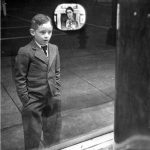 These days, nearly every household in the United States, if not the world has one, and those who don’t, have likely chosen to walk away from the television. And we aren’t even tied to our homes to watch television now. We can watch it from our computers or even our cell phones. Wow!! How far we have come. News is only new for a few seconds, and by the time stories come out in the paper, they have already been read on the internet. Before long, I’m sure the newspaper will become obsolete…if it hasn’t already.
These days, nearly every household in the United States, if not the world has one, and those who don’t, have likely chosen to walk away from the television. And we aren’t even tied to our homes to watch television now. We can watch it from our computers or even our cell phones. Wow!! How far we have come. News is only new for a few seconds, and by the time stories come out in the paper, they have already been read on the internet. Before long, I’m sure the newspaper will become obsolete…if it hasn’t already.
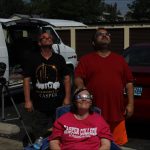
 Today’s solar eclipse will not be the first one I have ever seen, but it will be the first total solar eclipse I have ever seen. I most clearly recall the July 10, 1972 eclipse. It was a warm sunny day, and downtown Casper, Wyoming had set up a viewing telescope for those who wanted to have a look. Casper was not in the path of totality, so crowds were not an issue like they are this time. I find myself somewhat stunned that Casper is one of the best sites to view today’s eclipse. Casper isn’t usually a big tourist attraction, but today, we have found ourselves at the center of all the hoopla.
Today’s solar eclipse will not be the first one I have ever seen, but it will be the first total solar eclipse I have ever seen. I most clearly recall the July 10, 1972 eclipse. It was a warm sunny day, and downtown Casper, Wyoming had set up a viewing telescope for those who wanted to have a look. Casper was not in the path of totality, so crowds were not an issue like they are this time. I find myself somewhat stunned that Casper is one of the best sites to view today’s eclipse. Casper isn’t usually a big tourist attraction, but today, we have found ourselves at the center of all the hoopla.
I’ve watched a movie about viewing a total eclipse, and people come away feeling…somehow changed after viewing one. My mind can’t seem to wrap itself around how that could happen, but I guess I’ll see how I feel afterward. For me, I think that if I feel a change it will be more because I think that the signs of the sky were placed there by God, to speak to His people. Many people may think that’s crazy, but it’s no more strange than to think that it’s accidental. The whole universe was created by God, so why wouldn’t He plan it’s every move.

So, the eclipse is over now, and I must say that the moments in totality were…amazing. The color of the atmosphere around us was not like the typical, dusk that everyone said to expect. It was different than that somehow. My son-in-law, Kevin Petersen thought so too. While we were waiting for totality, I tried to look at the things everyone said to watch for, and probably the most surprising to me was the eclipse shadows. I don’t know what I thought it would look like, but when I saw it, I startled my daughter, Corrie Petersen; my son-in-law, Kevin; and my husband, Bob Schulenberg. I shouted, “Look!! It’s the eclipse shadows!!” They are actually called Solar Eclipse Crescent Shadows. Well, my family thought I saw a snake or something, hahaha!! We also noticed, as expected, that the birds started their evening song ritual, preparing to go to sleep for the night. We might have heard crickets, but the people around us set off fireworks at that time, so we couldn’t hear that. We saw the sunset along the horizon, and afterward we had to laugh, because we all forgot to look for the stars. I caught a very faint glimpse of them in a picture I took.


Totality was an amazing experience, but I like most people think that 2 minutes and 26 seconds is a very short time. You simply don’t have time to see everything that there was to see. The cool air was, in reality, a welcome change from the heat we had been sitting in, but like the rest of the eclipse, it didn’t last very long. With the return of the sun, came the warmth of the sun again. Totality was over, and yes, maybe I was changed. I had experienced a total eclipse, and it was amazing. It was something I will never forget.
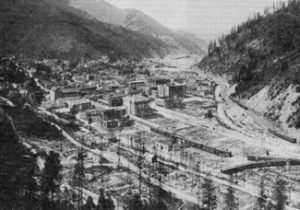
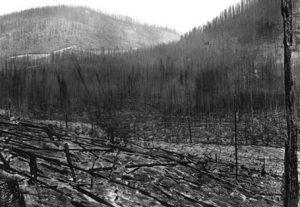 With summer, and especially late summer, when things are beginning to dry up, comes an increased danger of wildfires. Add to that, an extremely dry spring and early summer, and you have a recipe for disaster. Such was the case in northwest Washington, northern Idaho, and western Montana in 1910. There were a great number of problems that contributed to an over active fire season, and ultimately, the destruction that began on August 20, 1910, quickly became a firestorm that burned about three million acres…a full 4,700 square miles before it was over. The areas burned included parts of the Bitterroot, Cabinet, Clearwater, Coeur d’Alene, Flathead, Kaniksu, Kootenai, Lewis and Clark, Lolo, and Saint Joe National Forests. The extensive burned area was approximately the size of the state of Connecticut. The extreme scorching heat of the sudden blowup can be attributed to the great Western White Pine forests that blanketed Idaho. The hydrocarbons in the resinous sap boiled out and created a cloud of highly flammable gas that blanketed hundreds of square miles, which then spontaneously detonated dozens of times, each time sending tongues of flame thousands of feet into the sky, and creating a rolling wave of fire that destroyed anything and everything in its path.
With summer, and especially late summer, when things are beginning to dry up, comes an increased danger of wildfires. Add to that, an extremely dry spring and early summer, and you have a recipe for disaster. Such was the case in northwest Washington, northern Idaho, and western Montana in 1910. There were a great number of problems that contributed to an over active fire season, and ultimately, the destruction that began on August 20, 1910, quickly became a firestorm that burned about three million acres…a full 4,700 square miles before it was over. The areas burned included parts of the Bitterroot, Cabinet, Clearwater, Coeur d’Alene, Flathead, Kaniksu, Kootenai, Lewis and Clark, Lolo, and Saint Joe National Forests. The extensive burned area was approximately the size of the state of Connecticut. The extreme scorching heat of the sudden blowup can be attributed to the great Western White Pine forests that blanketed Idaho. The hydrocarbons in the resinous sap boiled out and created a cloud of highly flammable gas that blanketed hundreds of square miles, which then spontaneously detonated dozens of times, each time sending tongues of flame thousands of feet into the sky, and creating a rolling wave of fire that destroyed anything and everything in its path.
That summer had been described as “like no others.” The drought resulted in forests that were filled with dry fuel, which had previously grown up on abundant autumn and winter moisture. Fires were set by hot cinders flung from locomotives, sparks, lightning, and backfiring crews, and by mid-August, there were 1,000 to 3,000 fires burning in Idaho, Montana, Washington, and British Columbia. Then on August 20th, everything blew up into a firestorm. The firestorm burned over two days, August 20 and 21. It killed 87 people, most of them firefighters. The entire 28 man “Lost Crew” was overcome by flames and perished on Setzer Creek in Idaho outside of Avery. The Great Fire of 1910 is believed to be the largest, although not the deadliest, forest fire in United States history. It was commonly referred to as the Big Blowup, the Big Burn, or the Devil’s Broom fire. Smoke from the fire could be seen as far east as Watertown, New York, and as far south as Denver, Colorado. It was reported that at night, five hundred miles out into the Pacific Ocean, ships could not navigate by the stars because the sky was cloudy with smoke.
The fire actually started as many small fires. Then, on August 20, a cold front blew in and brought hurricane-force winds. The wind whipped the hundreds of small fires into one or two blazing infernos. The larger fires were impossible to fight. They simply didn’t have the manpower, or the supplies. The United States Forest Service…then called the National Forest Service…was only five years old at the time and unprepared for the possibilities of this dry summer. Later, at the urging of President William Howard Taft, the United States Army, 25th Infantry Regiment…known as the Buffalo Soldiers, was brought in to help fight the blaze. The most famous story of survival was that of Ed Pulaski, a United States Forest Service ranger who led a large group of his men to safety in an abandoned prospect mine outside of Wallace, Idaho, just as they were about to be overtaken by the fire. Pulaski fought off the flames at the mouth of the shaft until he passed out like the other men. Around midnight, one man said that he was getting out of there. Knowing that they would have no 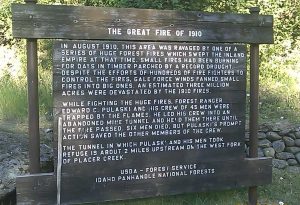
 chance of survival if they ran, Pulaski drew his pistol. He threatened to shoot the first person who tried to leave. In the end, all but five of the forty or so men survived. Several towns were completely destroyed by the fire. The fire was finally extinguished when another cold front swept in, bringing with it, steady rain. Unfortunately, it was too late for the 87 people who lost their lives in the blaze. Memorials were placed in several of the fire areas.
chance of survival if they ran, Pulaski drew his pistol. He threatened to shoot the first person who tried to leave. In the end, all but five of the forty or so men survived. Several towns were completely destroyed by the fire. The fire was finally extinguished when another cold front swept in, bringing with it, steady rain. Unfortunately, it was too late for the 87 people who lost their lives in the blaze. Memorials were placed in several of the fire areas.

 My grand niece, Aleesia Spethman has had a very busy summer. She is part of an active family, which includes her three older brothers, who keep Aleesia very busy when she is at home. Of course, being the only girl in a house with three brothers, can have its up side, and its down side. It’s pretty hard to get brothers to play girly games, so sometimes, Aleesia has to be a bit of a tom boy, a role she has taken seriously…or maybe it just comes naturally because of her brothers. She can keep up with the boys on many of the things they do, but they still treat her like a princess sometimes too.
My grand niece, Aleesia Spethman has had a very busy summer. She is part of an active family, which includes her three older brothers, who keep Aleesia very busy when she is at home. Of course, being the only girl in a house with three brothers, can have its up side, and its down side. It’s pretty hard to get brothers to play girly games, so sometimes, Aleesia has to be a bit of a tom boy, a role she has taken seriously…or maybe it just comes naturally because of her brothers. She can keep up with the boys on many of the things they do, but they still treat her like a princess sometimes too.
Aleesia is the girl her parents always wanted…not that they didn’t want those boys too. Jenny, Aleesia’s mom is very much a girly girl, and she wanted her own mini me to share her fashion sense, and all the other girly girl things with. They have a great time being girly together, shopping together, and playing the girly games that  Aleesia wants to play, and her brothers are much too macho for. The boys are very considerate of their sister, but you simply have to draw the line somewhere. They do take her along on their adventures too, so what more can a baby sister ask for?
Aleesia wants to play, and her brothers are much too macho for. The boys are very considerate of their sister, but you simply have to draw the line somewhere. They do take her along on their adventures too, so what more can a baby sister ask for?
Aleesia loves her grandma. Every evening, after a hard day of playing with her friends and brothers, Aleesia is picked up by her grandma, my sister, Cheryl Masterson. She goes to her grandma’s house for a few hours. They love to spend time together, because Aleesia is seriously Grandma’s Girl. Don’t get me wrong, because she very much loves her parents and brothers, but she also loves her grandma very much. In fact, if Aleesia had her way, her grandma would just move in with her family, because then everything would be absolutely perfect in her world. My sister and her youngest grandchild have a somewhat unique relationship. Of course, Cheryl loves all her grandchildren, but some grandchildren are the type who just wiggle their way into your heart and take up a residency there. Some grandchildren are after your heart, and they make a sincere effort to be with you. It isn’t that the two of you do 
 anything that is so out of the ordinary, but rather that you have opened your heart to their efforts to come in. I don’t know if that exactly explains how that is, but any grandparent who has been blessed with such a grandchild, knows exactly what I mean. And truly, anyone who has been blessed to have Aleesia love them a lot, is blessed indeed. I know, because I have been blessed to be one of those, and I love it. Today is Aleesia’s 5th birthday. For Aleesia, the next big adventure in her world will be Kindergarten…super fun!! Happy 5th birthday Aleesia!! Have a great day!! We love you!!
anything that is so out of the ordinary, but rather that you have opened your heart to their efforts to come in. I don’t know if that exactly explains how that is, but any grandparent who has been blessed with such a grandchild, knows exactly what I mean. And truly, anyone who has been blessed to have Aleesia love them a lot, is blessed indeed. I know, because I have been blessed to be one of those, and I love it. Today is Aleesia’s 5th birthday. For Aleesia, the next big adventure in her world will be Kindergarten…super fun!! Happy 5th birthday Aleesia!! Have a great day!! We love you!!

 After the Revolutionary War, and the United States independence that followed, the relationship between the two nations was quite strained. The United States did not like having British military posts on our northern and western borders, and Britain’s violation of American neutrality in 1794 when the Royal Navy seized American ships in the West Indies during England’s war with France. Finally, in an attempt to smooth things over, Supreme Court Chief Justice John Jay, who was appointed by President Washington, came up with a treaty. The treaty officially known as the “Treaty of Amity Commerce and Navigation, between His Britannic Majesty; and The United States of America” was signed by Britain’s King George III on November 19, 1794 in London. However, after Jay returned home with news of the treaty’s signing, President Washington, who was now in his second term, had encountered fierce Congressional opposition to the treaty. By 1795, its ratification was still uncertain, and there was work to be done to change things.
After the Revolutionary War, and the United States independence that followed, the relationship between the two nations was quite strained. The United States did not like having British military posts on our northern and western borders, and Britain’s violation of American neutrality in 1794 when the Royal Navy seized American ships in the West Indies during England’s war with France. Finally, in an attempt to smooth things over, Supreme Court Chief Justice John Jay, who was appointed by President Washington, came up with a treaty. The treaty officially known as the “Treaty of Amity Commerce and Navigation, between His Britannic Majesty; and The United States of America” was signed by Britain’s King George III on November 19, 1794 in London. However, after Jay returned home with news of the treaty’s signing, President Washington, who was now in his second term, had encountered fierce Congressional opposition to the treaty. By 1795, its ratification was still uncertain, and there was work to be done to change things.
The two biggest opponents to the treaty were two future presidents…Thomas Jefferson and James Madison. Jefferson was, at the time, in between political positions. He had just completed a term as Washington’s secretary of state from 1789 to 1793 and had not yet become John Adams’ vice president. Fellow Virginian, James Madison was a member of the House of Representatives. Jefferson, Madison and other opponents feared the treaty gave too many concessions to the British. They argued that Jay’s negotiations actually weakened American trade rights and complained that it committed the United States to paying pre-revolutionary debts to English merchants. Washington himself was not completely satisfied with the treaty, but considered preventing another war with America’s former colonial master a priority.
The treaty was finally approved by Congress on August 14, 1795, with exactly the two-thirds majority it needed 
 to pass. President Washington signed the treaty just four days later, on August 18, 1795. Washington and Jay may have won the legislative battle and averted war temporarily, but it created a conflict at home that highlighted a deepening division between those of different political ideologies in Washington DC, much like what we see these days. Jefferson and Madison mistrusted Washington’s attachment to maintaining friendly relations with England over revolutionary France, who would have welcomed the United States as a partner in an expanded war against England.
to pass. President Washington signed the treaty just four days later, on August 18, 1795. Washington and Jay may have won the legislative battle and averted war temporarily, but it created a conflict at home that highlighted a deepening division between those of different political ideologies in Washington DC, much like what we see these days. Jefferson and Madison mistrusted Washington’s attachment to maintaining friendly relations with England over revolutionary France, who would have welcomed the United States as a partner in an expanded war against England.
 As the pioneers headed west, there were various disputes over ownership of the lands they were settling into. The Native American people did not think that they should have to surrender their lands to the White Man, but it seemed that they had no choice. Still, there were some Native Americans who refused to be pushed around by the government. On August 17, 1862, violence erupted in Minnesota as desperate Dakota Indians attacked white settlements along the Minnesota River. This was a fight that the Dakota Indians would eventually lose. They were no match for the US military, and six weeks later, it was over.
As the pioneers headed west, there were various disputes over ownership of the lands they were settling into. The Native American people did not think that they should have to surrender their lands to the White Man, but it seemed that they had no choice. Still, there were some Native Americans who refused to be pushed around by the government. On August 17, 1862, violence erupted in Minnesota as desperate Dakota Indians attacked white settlements along the Minnesota River. This was a fight that the Dakota Indians would eventually lose. They were no match for the US military, and six weeks later, it was over.
The Dakota Indians were often referred to as the Sioux, which I did not know was a derogatory name derived from part of a French word meaning “little snake.” It almost makes it seem like they were talking badly about them to their face, but so they couldn’t understand it. The government treated the Dakota poorly, and the Dakota saw their hunting lands dwindling 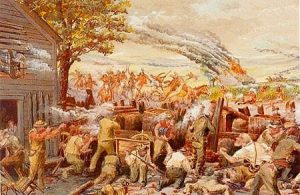 down, and apparently the provisions that the government promised to supply, rarely arrived. And now, to top it off, a wave of white settlers surrounded them too. To make matters worse, the summer of 1862 had been a harsh one, and cutworms had destroyed much of the crops. The Dakota were starving.
down, and apparently the provisions that the government promised to supply, rarely arrived. And now, to top it off, a wave of white settlers surrounded them too. To make matters worse, the summer of 1862 had been a harsh one, and cutworms had destroyed much of the crops. The Dakota were starving.
On August 17, the situation exploded when four young Dakota warriors returning from an unsuccessful hunt, stopped to steal some eggs from a white settlement. The were caught and they picked a fight with the hen’s owner. The encounter turned tragic when the Dakotas killed five members of the family. Now, the Dakota knew that they would be attacked. Dakota leaders, knew that war was at hand, so they seized the initiative. Led by Taoyateduta, also known as Little Crow, the Dakota attacked local agencies and the settlement of New 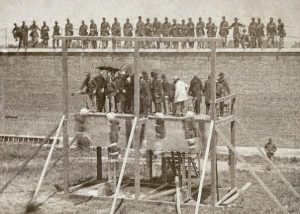 Ulm. Over 500 white settlers lost their lives along with about 150 Dakota warriors.
Ulm. Over 500 white settlers lost their lives along with about 150 Dakota warriors.
President Abraham Lincoln dispatched General John Pope, fresh from his defeat at the Second Battle of Bull Run, Virginia. Pope was to organize the Military Department of the Northwest. Some of the Dakota immediately fled Minnesota for North Dakota, but more than 2,000 were rounded up and over 300 warriors were sentenced to death. President Lincoln commuted most of their sentences, but on December 26, 1862, 38 Dakota men were executed at Mankato, Minnesota. It was the largest mass execution in American history, and it was all because they were starving, and had no hope of living through that year.

 Most of my friends know that I love shoes. In fact, that is truly an understatement. I have shoes for every need and for every outfit. I have hiking shoes, sandals, shoes for jeans, boots…lots of boots, and of course, heels…of every color, height, and style from low heels to platform heels, and even funky heels. Yes, I love shoes. But there is a line that even I won’t cross.
Most of my friends know that I love shoes. In fact, that is truly an understatement. I have shoes for every need and for every outfit. I have hiking shoes, sandals, shoes for jeans, boots…lots of boots, and of course, heels…of every color, height, and style from low heels to platform heels, and even funky heels. Yes, I love shoes. But there is a line that even I won’t cross.
Over the centuries in many areas of the world, shoe style was really a show of status. And in some countries, the size of a woman’s foot was so important that women would stuff their feet into shoes that would fit a young child. Those women were so intent on making their feet small, that they would perform a procedure on them called foot binding. It is a crazy way of tying the toes in such a way, so as to make a point of the front of the foot. The foot was then bent almost in half to fit in a shoe for a young child. I think every woman would like her feet to be smaller, at least every woman who wears size seven or above, but foot binding is extreme.
I love platform heels, but some styles…both old and new, are ridiculous. When the platform is so high, and 

 made of something with no give to it, or has no heel on it, the woman wearing the heel really can’t even walk by themselves. And believe me, I would need help too, and I’m used to platforms. It’s just that these aren’t platforms. No, they are stilts!! Platforms have been a tradition for a very long time in Europe, clear back to the 17th century, and then they were out of fashion until the 20th century. Really, it wasn’t until Ferragamo reintroduced them in the 1930s that platforms came back in style. In 2009, an exhibition was organized, with an accompanying catalog on the topic of these elevating shoes, titled “On A Pedestal: From Renaissance Chopines to Baroque Heels.” Chopines, which were also known as zoccoli or pianelle, are a platform shoe up to 20 inches high. Of course, those who wore them required the help of servants so that they didn’t fall flat on their face…in the name of fashion. The idea of chopines, besides being a fashion statement, was to protect the wearer’s clothes from street mud. Never mind the servant’s clothes, and really, why did they have to go out in the
made of something with no give to it, or has no heel on it, the woman wearing the heel really can’t even walk by themselves. And believe me, I would need help too, and I’m used to platforms. It’s just that these aren’t platforms. No, they are stilts!! Platforms have been a tradition for a very long time in Europe, clear back to the 17th century, and then they were out of fashion until the 20th century. Really, it wasn’t until Ferragamo reintroduced them in the 1930s that platforms came back in style. In 2009, an exhibition was organized, with an accompanying catalog on the topic of these elevating shoes, titled “On A Pedestal: From Renaissance Chopines to Baroque Heels.” Chopines, which were also known as zoccoli or pianelle, are a platform shoe up to 20 inches high. Of course, those who wore them required the help of servants so that they didn’t fall flat on their face…in the name of fashion. The idea of chopines, besides being a fashion statement, was to protect the wearer’s clothes from street mud. Never mind the servant’s clothes, and really, why did they have to go out in the 
 mud anyway? They were aristocrats, couldn’t someone just carry them on a platform chair, or run their errand for them. Whatever the case may be, I will not be buying a pair of these crazy stilt platforms, should they ever come into style again.
mud anyway? They were aristocrats, couldn’t someone just carry them on a platform chair, or run their errand for them. Whatever the case may be, I will not be buying a pair of these crazy stilt platforms, should they ever come into style again.
I do love my many styles of shoes, and my platforms are among the favorites, but I draw the line at about a 3 inch platform. Much more than that, and I not only have difficulty walking, but I end up taller than everyone around me, and for me that is just too odd. I am used to being one of the “wee ones,” as my niece Kellie Hadlock calls me, and that’s ok with me. I never wanted to be tall anyway. I’ll let my platforms make me look tall. I’m good with that!!

